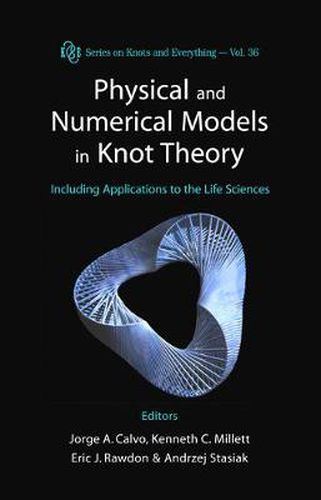Readings Newsletter
Become a Readings Member to make your shopping experience even easier.
Sign in or sign up for free!
You’re not far away from qualifying for FREE standard shipping within Australia
You’ve qualified for FREE standard shipping within Australia
The cart is loading…






The physical properties of knotted and linked configurations in space have been of interest to physicists and mathematicians for a long time. More recently and more widely, they have become interesting to biological and computer scientists, and to engineers among others. The depth of importance and breadth of application are now widely appreciated. In this volume, there are several contributions from researchers who are using computers to study problems that would otherwise be untractable. While computations have long been used to analyze problems, formulate conjectures, and search for special structures in knot theory, increased computational power has made them a staple in many facets of the field. From properties of knot invariants, to knot tabulation, studies of hyperbolic structures, knot energies, and to the exploration of spaces of knots, computers have opened the doors to problems that would have otherwise been too difficult to do by hand computation. There are also contributions concentrating on models that researchers use to understand knotting, linking, and entanglement in physical and biological systems. Topics range from knotted umbilical cords, to studies of DNA knots and knots in proteins.
$9.00 standard shipping within Australia
FREE standard shipping within Australia for orders over $100.00
Express & International shipping calculated at checkout
The physical properties of knotted and linked configurations in space have been of interest to physicists and mathematicians for a long time. More recently and more widely, they have become interesting to biological and computer scientists, and to engineers among others. The depth of importance and breadth of application are now widely appreciated. In this volume, there are several contributions from researchers who are using computers to study problems that would otherwise be untractable. While computations have long been used to analyze problems, formulate conjectures, and search for special structures in knot theory, increased computational power has made them a staple in many facets of the field. From properties of knot invariants, to knot tabulation, studies of hyperbolic structures, knot energies, and to the exploration of spaces of knots, computers have opened the doors to problems that would have otherwise been too difficult to do by hand computation. There are also contributions concentrating on models that researchers use to understand knotting, linking, and entanglement in physical and biological systems. Topics range from knotted umbilical cords, to studies of DNA knots and knots in proteins.